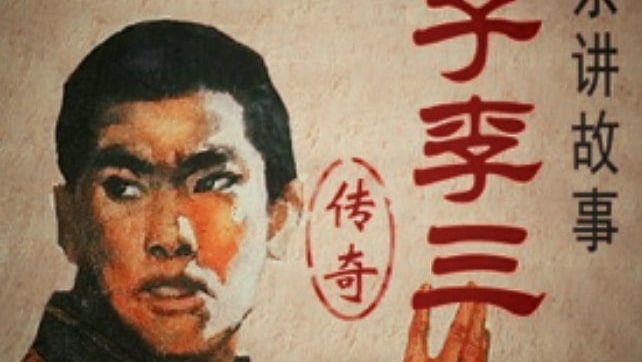
The legend of Swallow Li the Third 燕子李三 has long captured the imaginations of many in China, blending history, myth, and cultural fascination. The character, known for his incredible agility and ability to ‘fly’ over rooftops, is often remembered as a righteous thief who stole from the rich to aid the poor. This figure, deeply rooted in early 20th-century Chinese folklore, has been perpetuated through novels, films, and television dramas, transforming him into a larger-than-life hero. However, the historical truth behind Swallow Li the Third 燕子李三 is more complex and, in many ways, far less glamorous than the popular tale.
In historical records, multiple figures adopted the moniker of Swallow Li 燕子李, but the most well-known was a criminal named Li Jinghua 李景華, active in the 1930s in the areas around Beijing and Tianjin. Born in Cangzhou 滄州, a region renowned for its martial arts, Li Jinghua 李景華 was well trained in martial arts. He first began his criminal career after being expelled from an acting troupe in Luoyang 洛陽, where he had been accused of theft. With few options, Li Jinghua 李景華 resorted to burglary to survive, becoming notorious for his swift, stealthy heists.
Li Jinghua’s 李景華 trademark was leaving a paper swallow behind at his crime scenes, an action reminiscent of modern criminal groups claiming responsibility for their acts. His targets were often the homes of the wealthy, including military officials and political figures like the warlord Zhang Changzong 張昌宗 and the statesman Pan Fu 潘復. The popular legend claims that Li Jinghua 李景華 stole from the rich to give to the poor, an action the officials wish to deny. They claim, most of the stolen wealth was squandered on gambling, opium, and other vices. His notoriety grew, especially as he was able to escape capture multiple times, thanks not only to extraordinary skill in light-footed acrobatics but because he had bribed prison guards, allowing him to roam freely during the day and escape at night.
The tale of Li’s 李 exceptional agility – capable of scaling walls and leaping from rooftop to rooftop – was likely exaggerated over time. However, as we now know, these skills are real and can be seen and experienced today, without any associated criminal activity. We should also remember that times were difficult in China then, as the country had only just emerged from the tumultuous era of the late Qing 清 dynasty.
Li Jinghua’s 李景華 end came when he was caught while attempting to steal during an undercover surveillance operation. He died in custody after a lengthy illness, and his body was buried without ceremony, as even his wife refused to claim it.
Interestingly, another criminal bearing the name Swallow Li 燕子李 emerged in the 1940s, known as Li Shengwu 李聖武, who was far more violent than his predecessor. Li Shengwu’s 李聖武 crimes included armed robberies and even murder, and his capture in 1949 led to his execution by firing squad. During his interrogation, he denied the supernatural feats attributed to Swallow Li 燕子李, explaining that he used a rope and grappling hook to scale walls during his heists.
In the years following, various other individuals claimed the title of Swallow Li 燕子李, adding further confusion to the character’s legacy. Whether or not these figures were the true embodiment of the legendary thief is unclear, but the recurring theme is one of a figure who symbolizes defiance against an unjust society – a ‘righteous outlaw’ who, despite his crimes, resonated with the public’s desire for a hero who would right the wrongs of the powerful.
Ultimately, the story of Swallow Li the Third 燕子李三 is less about a single person than it is about a symbol. The character represents the romanticized ideal of a noble outlaw, a figure who, through their actions, challenges the corrupt authorities of their time. This aligns with the broader Chinese cultural dream of the ‘heroic outlaw,’ as expressed by historian Yi Zhongtian 易中天, who identified three major dreams in Chinese culture: the dream of a wise ruler, the dream of incorruptible officials, and the dream of a righteous hero. In this sense, Swallow Li 燕子李 is less about historical accuracy and more about the enduring wish for justice and rebellion against tyranny, a myth that continues to captivate and inspire generations.
References:
- Historical Background of Li San’s Identity:
《京報》 (Beijing News), 1934. Coverage of Li Jinghua’s trial and life details, such as his capture, escape, and criminal activities. - The Legend of Li San:
张文武 (Zhang Wenwu), From Thieves to Legends: The Story of Swallow Li San (《從盜竊進入傳說——燕子李三其人》). This article delves into the transformation of Li Jinghua’s real-life persona into a folk hero. - The Reality Behind Li San’s Criminal Activities:
▪ 徐愛博 (Xu Aibo), The True Face of Swallow Li San (《燕子李三的真面目》). This book investigates the gap between the legend and the reality of Li Jinghua’s life.
▪ 《盛京時報》 (Shengjing Times), 1934. Interview with Li Jinghua, where he denied the supernatural abilities attributed to him in the legends. - Impact on Popular Culture:
▪ 柳溪 (Liu Xi), The Legend of Swallow Li San (《燕子李三傳奇》). This novel, based on the historical Li Jinghua, dramatizes his life and the criminal folklore surrounding him.
▪ The 97 Version TV Series 燕子李三 (Swallow Li San), which helped cement his image as a folk hero and thief with near-superhuman abilities.
These sources provide a mixture of historical documentation, modern interpretations, and cultural references that would offer both factual and narrative insights into the figure of 燕子李三 and the evolution of his legend.
